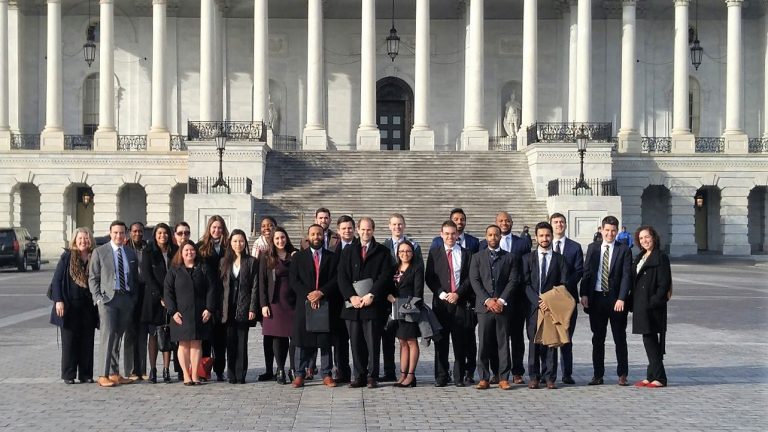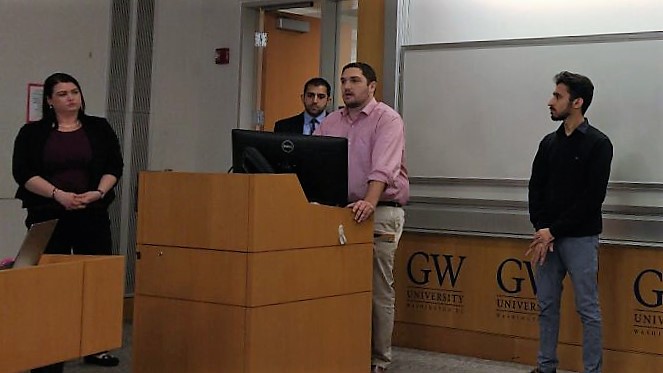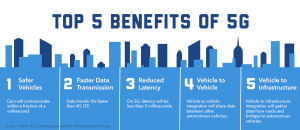Written by Allie Perkins, Global MBA class of 2018
It’s only been a few days since I’ve returned from my trip in Asia, and I already can’t wait to go back (even though the jet lag has been a struggle!). I’ve been reflecting on my time in Vietnam, and I’m still in awe at how wonderful of an experience it was. Ho Chi Minh and Hanoi could not be more different. Ho Chi Minh was a bustling metropolis, similar to a New York. The streets were packed at all hours and traffic never seemed to ease. It was loud, fast-paced, and wonderful. Hanoi is the capital of Vietnam, and is full of ancient wonder. Everything moves a little more slowly, but the city is still so alive.
 The actual work with our client was extremely rewarding, though was not without its challenges. Working with people from a completely new culture is always a learning experience, and I appreciate the opportunity to engage with clients from a place so different from the U.S. I’m grateful to have been able to learn more about Vietnamese culture and business and work closely with top executives in a field new to me. The new skills I’ve learned will surely be useful as I enter the workforce this summer.
The actual work with our client was extremely rewarding, though was not without its challenges. Working with people from a completely new culture is always a learning experience, and I appreciate the opportunity to engage with clients from a place so different from the U.S. I’m grateful to have been able to learn more about Vietnamese culture and business and work closely with top executives in a field new to me. The new skills I’ve learned will surely be useful as I enter the workforce this summer.
I’m not sure that I had any concrete expectations for my trip or for Vietnam beforehand, which I think ended up being a positive. I fell in love with Vietnam the minute I stepped off the plane, and every minute I spent in country only intensified it. The people are friendly and warm, the streets feel safe at all hours, the food is wonderful (though a bit of a challenge if you’re a vegetarian), and the energy is palpable. I learned so many valuable things about engaging with clients in an international space, including navigating the challenges of the time differences and communication preferences and styles. Everything about my trip was wonderful, and I can’t wait to return!
Feature Photo: Temple of Literature in Hanoi
In text image: The team at one of our client’s restaurants in Ho Chi Minh







 network coverage, and less latency than 4G networks. Experts predict the 5G network is what is needed to successfully launch autonomous vehicles.2 Autonomous vehicles will shape the future of mobility and infrastructure because they will possess technology that communicates with other cars, roads, bridges, pedestrians, etc. This aggregated data will lead to the creation of Smart Cities with smart infrastructures, and the 5G network is vital to properly gather and process massive amounts of data in real time. It is essential that AVs have this ultra-high speed network because communication between vehicles and infrastructure must always be completely up-to-the-minute to ensure the safety of everyone on the road. The bandwidth and speed made possible by 5G networks will benefit AVs by making cloud computing more able to reliably aid connected cars in making split-second decisions.
network coverage, and less latency than 4G networks. Experts predict the 5G network is what is needed to successfully launch autonomous vehicles.2 Autonomous vehicles will shape the future of mobility and infrastructure because they will possess technology that communicates with other cars, roads, bridges, pedestrians, etc. This aggregated data will lead to the creation of Smart Cities with smart infrastructures, and the 5G network is vital to properly gather and process massive amounts of data in real time. It is essential that AVs have this ultra-high speed network because communication between vehicles and infrastructure must always be completely up-to-the-minute to ensure the safety of everyone on the road. The bandwidth and speed made possible by 5G networks will benefit AVs by making cloud computing more able to reliably aid connected cars in making split-second decisions.